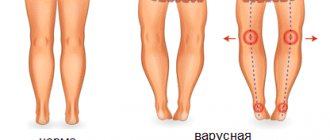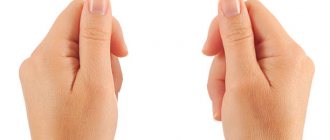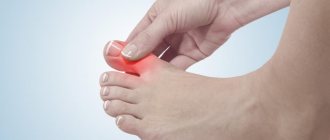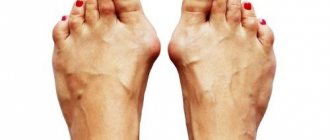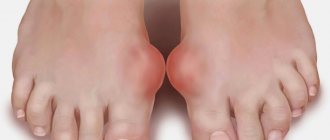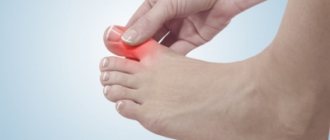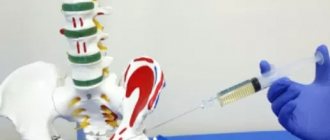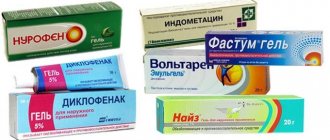Rickets is a bone formation disorder in which the bones soften, which can lead to deformation and fractures. The condition is caused by a lack of vitamin D. The pathology is associated with an imbalance of mineral metabolism. Rickets is called a disease of “autumn” children, since it is sunlight that helps skin cells convert vitamin D from a passive state to an active one. Rickets primarily affects children, although the pathology can develop in adults (osteomalacia).
For the correct absorption of calcium and phosphorus, vitamin D is required. With a lack of vitamin D, an insufficient amount of minerals enters the blood, and calcium metabolism is disrupted. In addition to a lack of vitamin D, a deficiency of calcium in the diet is considered a provoking factor for rickets. Some digestive disorders, prolonged vomiting, diarrhea, kidney and liver diseases also affect the absorption of calcium and phosphorus.
Symptoms of rickets
The first symptoms usually appear in two-month-old babies: restlessness, poor sleep, sweating, itching, baldness (mainly in the back of the head). Then there is a decrease in muscle tone - a “frog” belly is noticeable.
Symptoms of rickets include:
- bone pain;
- brittle bones;
- constipation;
- craniotabes: osteomalacia (softening) of the skull bones;
- costochondral thickenings - “beads” are visible under the skin of the chest: “rosary”;
- delayed physical development: short height, weight;
- deformation of the chest: bulging of the sternum - “chicken breast”;
- spinal, pelvic or cranial deformities: hump, narrow pelvis, square head;
- deformation of the bones of the limbs: crooked legs;
- tetany: involuntary muscle spasms;
- widening of the wrists: “rachitic bracelets”;
- disruption of teething.
Signs of rickets in infants
Insufficient levels of vitamin D in the body of an infant leads to a decrease in the concentration of calcium salts, which are necessary for the normal functional state of: the nervous system (salts are involved in the generation and transmission of nerve impulses); musculoskeletal system (calcium salts are directly involved in the mineralization of bone tissue, which gives it the necessary strength). Therefore, signs of rickets in infants include manifestations of disturbances in the functional activity of the structures of the nervous system, as well as disturbances in the formation and development of bone tissue.
Manifestations of functional disorders of the nervous system include:
- Changes in the child’s behavior – tearfulness, irritability.
- Poor sleep – the infant’s sleep time decreases during the day, sleep is superficial, and the infant wakes up from the slightest noise.
- Increased sweating of the skin, which is a consequence of a violation of the functional activity of the autonomic part of the nervous system - such increased sweating is more typical for the occipital region of the head, while after the child wakes up, you can notice a wet spot on the pillow (“wet pillow symptom”).
- Increased hair loss in the back of the head is the result of increased sweating of the skin in this area, as well as the child’s restless sleep.
- A decrease in the tone of the pepper-striated muscles, which is accompanied by their flabbiness; with a decrease in the tone of the muscles of the abdominal walls, it increases in volume.
Such symptoms appear first, even before the development of manifestations from the musculoskeletal system, which include:
- Delayed eruption of baby teeth, which then become dull, dark, with rapid development of caries.
- The bones of the skull become soft, the parietal and frontal tubercles increase, and the healing of the large fontanelle is delayed.
- Slowing the growth of a child, who may lag significantly behind peers. The appearance of thickenings on the ribs in the area of their connection with the sternum in the form of dense nodules (“rachitic rosary”).
- Pathological bone fractures, which most often develop when a child begins to walk under the age of one year.
Rickets in infants during the development of symptoms from the musculoskeletal system is at the stage of significant disturbances in the metabolism of minerals in the body. Therefore, its treatment will be most effective in the early stages of development, when signs of rickets in infants appear only from the nervous system. To confirm the diagnosis, laboratory tests of mineral metabolism indicators in the body are carried out.
Treatment of this metabolic disorder consists of restoring vitamin D levels (vitamin D preparations and calcium salts are used). To improve the functional state of skeletal muscles and bones, a special therapeutic massage is performed. It should only be carried out by a specialist, since independent mechanical impact can lead to additional deformation of the bones and their damage.
Diagnosis of rickets
A competent pediatrician makes the diagnosis of rickets after a physical examination of the baby. The diagnosis is confirmed by a screening test called the Sulkowicz test, which detects the level of calcium in morning urine.
A blood test is needed to confirm low calcium and phosphorus levels in the blood. In rickets, serum alkaline phosphatase levels are high and citric acid levels are low. Metabolic acidosis is detected through blood (arterial) gas analysis.
X-ray examination allows you to see calcium loss: osteoporosis, changes in the structure and/or shape of bones. An ultrasound of the forearm bones is also prescribed.
Vitamin D: what does the body need?
What we call a vitamin is actually a hormone-like substance. Its common forms are ergocalciferol (vitamin D2) and cholecalciferol (vitamin D3). They enter our body with products of animal and plant origin, and vitamin D3 is formed in the skin under the influence of ultraviolet radiation (sunlight). It should be noted that these forms themselves are not active. The main effect on internal organs is exerted by substances that are formed from vitamin D (calcidiol and calcitriol) with the help of certain enzymes.
It must be said that more than 30 different tissues of our body react to this vitamin, the main ones are in the intestines, kidneys, bones, muscles, parathyroid glands, and this also applies to cells of the immune system. Imagine how large the area of influence of this substance is.
But still, we will dwell in more detail on the development of the skeletal system.
You might be surprised, but vitamin D does not directly affect bones.
But calcitriol, formed from it, increases the synthesis of a substance such as alkaline phosphatase. This enzyme helps calcium accumulate and be deposited in the bones, making them stronger. A substance that helps increase the activity of bone cells also begins to form more actively.
Prevention of rickets
A woman should take care of prevention during pregnancy.
Required:
- Balanced diet.
- Sufficient insolation (stay in the air).
- Maintaining a daily routine.
- Observation in consultation.
- Taking vitamin D from 32 weeks.
Prevention of rickets includes:
- Breastfeeding or adapted formulas.
- Timely introduction of complementary foods.
- Regular walks.
- Massage, gymnastics.
- Specific prevention (taking vitamin D).
To diagnose and treat rickets, as well as to receive detailed advice, contact experienced medical pediatricians
Causes of pathology
Rickets in infants is a consequence of insufficient levels of vitamin D in the body.
Several main reasons can lead to the development of this condition:
1. Incorrect artificial feeding of an infant. Breast milk contains all the vitamins, minerals and organic compounds that cover the daily needs of the baby's body. With artificial feeding, especially if not adapted formulas are used, but cow's milk, a deficiency of vitamin D and calcium salts develops in the body, which leads to the development of rickets. 2. Pathology of the digestive system. This leads to the fact that even with sufficient intake of vitamin D and minerals from food, their absorption from the intestinal lumen into the blood is reduced. 3. Insufficient skin exposure. It is very important for the child’s skin to be exposed to sunlight, which contains the ultraviolet spectrum of light necessary for the normal course of the process of synthesis of endogenous (own) vitamin D.
For sufficient insolation of the skin, it is enough to go for a walk, preferably in sunny weather, at least for half an hour a day. Due to insufficient insolation, rickets in infants often develops in the autumn-winter period of the year. Knowledge of the causes of rickets in infants will help to effectively treat this disease, as well as take measures to prevent its development.
Healthy Family clinic of evidence-based pediatrics
Rickets is an imbalance of phosphorus-calcium metabolism, in which phosphorus and calcium are not absorbed from the intestines, resulting in disruption of bone tissue formation. Most often, children experience classic rickets (D-deficiency), which develops as a result of vitamin D deficiency. As a result of this pathology, bone tissue, the nervous and endocrine systems, and internal organs are affected. The disease is associated with active growth, so the diagnosis is made in children under 2 years of age.
Rickets in newborns: vitamin D deficiency
The occurrence of rickets is associated not only with a deficiency of vitamin D from food, but also with its insufficient synthesis in the body. It is known that only 10% of vitamin D comes from food, and 90% of this vitamin is formed in the skin under the influence of ultraviolet radiation, that is, under the influence of sunlight and artificial UV irradiation. Even ten minutes of irradiation of the hands or face can provide the synthesis of vitamin D in the required amount for the body. In this regard, rickets most often develops in children born in the cold season, when the level of natural insolation is extremely low. Rickets is also common in children living in cold climates with extremely low solar activity.
Children who receive their mother's breast milk do not experience vitamin D deficiency, provided the mother is well fed. But, if the intake of proteins, fats and carbohydrates is unbalanced (for example, if a nursing mother is on a diet), the child will no longer receive the required amount of vitamin D. Also, problems with phosphorus-calcium metabolism may occur in babies receiving infant formula instead of mother's milk. When artificial feeding, calcium and phosphorus are absorbed by only 20-30%, which can affect the development of vitamin D-deficiency rickets.
Signs of vitamin D deficiency rickets
There are three stages of development of rickets: initial, peak and convalescence. The first symptoms of the initial stage may appear at 1-2 months of a child’s life, but most clearly manifest themselves at 3-4 months. The course of the disease occurs rapidly, and therefore the first stage of rickets lasts only 2-4 weeks. Symptoms of the disease at this stage are not specific, so often parents may not suspect the onset of the disease. The first stage of rickets is expressed in nervous and autonomic disorders, manifested as:
— Sleep disturbance, causeless tearfulness, frequent startling for no reason;
- Poor appetite of the baby, in which the usual dose is not eaten;
- Abnormal bowel movements, frequent constipation or diarrhea;
— Increased sweating of the child even at normal or low ambient temperatures. Severe night sweats with sweat that has a strong specific odor;
— Hair matting on the back of the head with the formation of a receding hairline;
- Slight decrease in muscle tone.
It is necessary to tell your doctor about the first symptoms, because the disease in the early stages can be stopped and not allowed to develop into the second stage - the height of which will be characterized by the following symptoms:
Pathologies of the muscular system:
— The baby has low muscle tone;
— Joint mobility develops;
— Children may develop a phenomenon called red dermographism. With this phenomenon, when you press on the baby's skin, a red color will appear. Normally, when pressed, a white mark remains.
Changes in the skeletal system:
— The bone tissue softens, and the bones of the skull become plastic. Late closure of the fontanel occurs;
— Deformation of the skull bones occurs, causing the head to take an elongated shape with a flattened occiput;
— Slow teething is noted;
— Osteogenesis occurs, during which the frontal and parietal tubercles of the skull increase, and rachitic “bracelets” and “strings of pearls”—thickenings on the phalanges of the fingers—appear;
— Due to the softening of bone tissue, deformation of the chest occurs (“compression” on the sides), a decrease in the pelvic bones, as well as curvature of the lower extremities (o-shaped or x-shaped). Flat feet develop;
Changes in the nervous system:
— Sleep disturbance, frequent tearfulness, irritability;
- Anxiety, timidity, fears;
- Heavy sweating.
Changes in the digestive system:
- Decreased appetite in the baby;
— Decreased intestinal tone and, as a result, stool disturbances (constipation or diarrhea);
— Enlargement of the liver and spleen, the baby has bloating.
With the development of rickets, disruptions occur in the functioning of the cardiovascular system and lungs, which causes difficulty breathing and tachycardia. Children have a lag in mental and physical development. In some cases, physical skills are delayed, and the child cannot hold his head up, roll over on his stomach, crawl, or walk slowly.
At the third stage of the disease or convalescence after treatment, neurological symptoms disappear and the baby gradually begins to lead a normal lifestyle. But deformational changes in the child’s skeletal system remain for life. Thus, for women who suffered from rickets in childhood, a narrowing of the small pelvis is characteristic, which is an indication for a caesarean section during childbirth.
Nowadays, vitamin D deficiency rickets, detected in a timely manner in the early stages, is successfully cured, leaving no trace of itself in adult life.
Diagnosis of rickets in children
The diagnosis of rickets is determined by clinical signs, which are confirmed by laboratory tests and x-ray data.
To identify a more accurate degree of disturbance of phosphorus-calcium metabolism, a biochemical test of blood and urine is prescribed to determine the content of phosphorus, calcium and alkaline phosphatase. A urine test (Sulkowicz test) is performed to determine the level of calcium loss. In children with pathology, this indicator at its height will have a negative value. To determine the degree of bone demineralization, an x-ray of the long bones is taken.
Consequences of vitamin D deficiency rickets in children
Rickets is a serious pathology for children, so if alarming symptoms appear, you should show your baby to a doctor. Currently, modern medicine makes it possible to diagnose the disease at an early stage. If therapy begins at the first stage of the disease, the disease responds well to treatment without developing consequences in the future.
But it often happens that rickets can be detected already at the second stage of the disease, in the presence of pronounced symptoms, when serious changes are already observed in the baby’s body. The consequences of such rickets will have to be treated throughout your life.
In children who have suffered a severe form of rickets, severe skeletal deformations are observed, for example, curvature of the legs, scoliosis, and pelvic deformation. Also, such children experience some delay in neuropsychic and physical development.
The consequences of rickets will also be disruptions in the functioning of the immune system, and as a result, frequent colds turning into bronchitis and pneumonia. Often children who have had rickets suffer from dental caries. In adulthood, the consequences of rickets manifest themselves in the form of osteoporosis.
Children who have had rickets should be examined by a doctor quarterly for at least three years. A pathology such as rickets is not a contraindication to vaccination. Such children can be vaccinated within two to three weeks after the start of treatment.
Treatment of vitamin D deficiency rickets in children
The treatment of rickets requires an integrated approach. Treatment is prescribed by the doctor depending on the severity of the symptoms. Most often, hospitalization is not required, and treatment takes place at home. Typically, therapy includes organizing the correct daily routine, a balanced diet, medications and non-drug interventions. Children suffering from rickets need daily sunbathing and exposure to fresh air for three to four hours. Such babies need to undergo daily hardening procedures in the form of rubdowns and air baths.
Particular attention should be paid to the child's nutrition. If the baby is breastfed, then the nursing mother should carefully monitor her diet, receiving the required amount of vitamins and microelements. If necessary, you should take pharmacy vitamin complexes. But since breast milk contains vitamin D in small quantities, and the vitamin content in infant formula is only 400 ml/l, there is a need for additional administration of vitamin D, phosphorus and calcium. Children with vitamin D deficiency rickets need early introduction of complementary foods. Thus, vegetable puree and yolk should be introduced from 3-4 months, cottage cheese from 4 months, porridge from 4-4.5 months and meat from 5-6 months. Juices and fruit purees are also introduced at an earlier date.
The baby's diet should be balanced and contain the required amount of proteins, minerals and vitamins. Since vitamin D is a fat-soluble vitamin, it is important to monitor the balance of fats in the child’s body and promptly introduce fats, such as butter, into the baby’s diet.
Specific treatment will be carried out with vitamin D preparations. The duration of treatment and dose are determined depending on the severity of the disease. The minimum therapeutic dosage of vitamin D will be at least 3-4 thousand IU/day. The therapeutic dose of the drug will be higher than the prophylactic dose. Also, complex treatment includes taking multivitamins, calcium supplements, and fluoride. After completing the treatment course with vitamin D, a prophylactic dose is prescribed. To exclude the development of hypervitaminosis D, treatment is carried out under the control of the Sulkovich test and biochemical markers.
Non-specific treatment includes procedures aimed at general strengthening of the body: general ultraviolet irradiation, therapeutic massage, exercise therapy, pine baths to strengthen the immune system and calm the nervous system and sodium chloride baths to increase muscle tone, therapeutic mud applications and paraffin therapy.
Prevention of rickets
You should think about preventing rickets even before the baby is born. For preventive purposes, the expectant mother should take special vitamin and mineral complexes containing calcium and vitamin D, eat a healthy and balanced diet, spend time in the fresh air every day and avoid infectious diseases.
After the baby is born, the mother needs to continue taking vitamins and feed the baby with breast milk. To improve the overall health of the baby, hardening procedures should be carried out and daily massage, which plays an important role in prevention. During daily walks in the fresh air, it is necessary that the baby's skin receives a sufficient amount of sunlight. For specific prevention of rickets, a child must systematically receive vitamin D. The course prophylactic dose is prescribed by a pediatrician and is usually 200-400 thousand IU.
Vitamin D for infants
It is believed that breastfed babies receive all the necessary substances from their mother's milk. But it is worth noting that even adults can be deficient in vitamin D. And sunlight does not always replenish its supply. If you were able to understand the complex scheme described above for converting vitamin D into active forms, you saw that this path is not so short. This means that due to weak activity of the intestines, kidneys, or a decrease in the activity of at least one of the enzymes, the formation of calcitriol will also decrease. That is, it does not always depend on prolonged exposure to the sun, which many mothers pin their hopes on. This is why pediatricians prescribe vitamin D for children for prevention. The baby’s bones are actively growing, and this vitamin provides a balance of phosphorus and calcium, which has a beneficial effect on the formation of the skeleton. If this balance is disturbed, rickets may develop.
Rachitic chest and crooked legs
With rickets, the growth of bones in length is slowed down. From 5-6 months of age, children are stunted in growth. There is an increased growth of osteoid tissue in the metaphyses of long bones, thickenings are formed - rachitic “bracelets” on the wrists and shins, “strings of pearls” on the phalanges of the fingers, rachitic “rosaries” on the ribs.
Drawing. Rachitic “bracelets” on the wrists (1, 2). Rachitic “rosary” at the border of the bone and cartilaginous parts of the ribs.
With rickets, due to the softness of the ribs, a depression in the form of a belt appears at the place of attachment of the diaphragm, the lower ribs spread out to the sides under the pressure of the abdominal organs, and the upper ones are pulled inward, the lower part of the chest is expanded, and the upper is narrowed. In very severe cases, a “chicken” breast is formed - the sternum is protruded forward, or a “cobbler’s chest” - the lower part of the sternum is depressed.
Drawing. “Chicken” breast (1) and “shoemaker’s” breast (2, 3) with rickets in a child.
My son is 1 year and 2 months old. Runs around the house without a T-shirt. Every time I pay attention to his ribs - the ribs themselves are sunken, but the lower ones seem to be turned out from below. Maria
In infants, the tone of the flexor muscles predominates. Children usually lie on their backs with their legs bent, tucking them inward, softening the bones to form O-shaped legs. The deformation intensifies under the weight of the body when the child begins to stand and walk. In children who are already on their feet and walking, the tone of the extensor muscles predominates. If softening of the bones of the lower extremities occurs at this age, X-shaped legs are formed. If muscle tone is significantly reduced, then even with severe forms of rickets and significant softening of the bones, curvature of the legs does not occur.
Drawing. O-shaped curvature of the legs in children with rickets.
Drawing. X-shaped curvature of the legs in children is a consequence of rickets.
At the age of 10 months, my daughter’s legs curved like the letter “O”. The diagnosis in the chart is: Post-strachitic O-shaped deformity of the lower extremities. The orthopedist said it will improve by two years. To believe or not to believe? Kate
Muscles suffer from rickets
Low muscle tone (muscle hypotonia) and loose joints are a constant companion to rickets. Due to flabby muscles and loose joints, a child lying on his back can easily pull his foot towards his face and even throw it behind his head. The patient's posture is typical - he sits with his legs crossed and supports his torso with his hands, with a rachitic hump behind him. With rickets, the child later begins to hold his head up, roll over, sit, stand and walk. After treatment, muscle hypotension persists for a long time.
